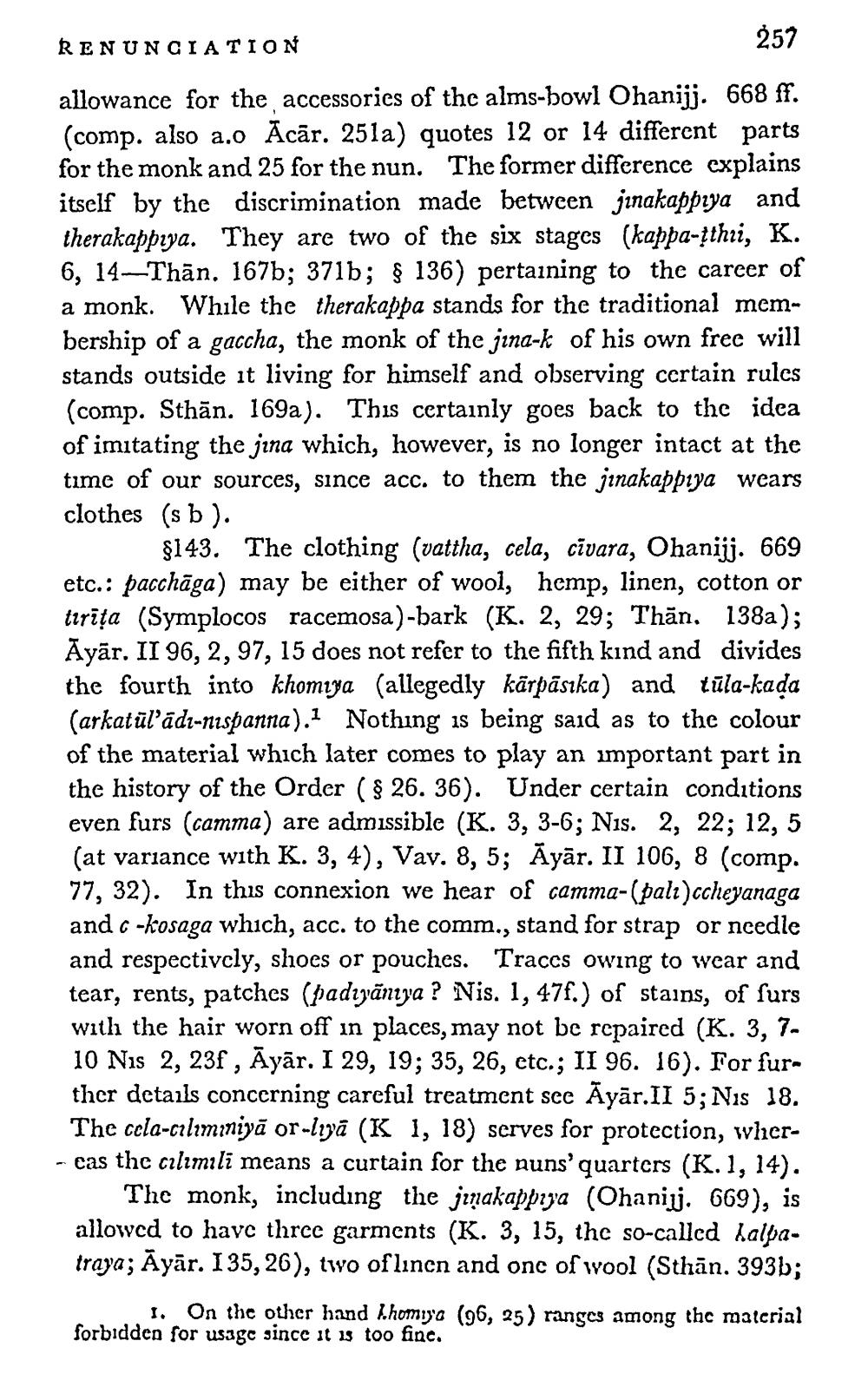________________
257
RENUNCIATION allowance for the accessories of the alms-bowl Ohanijj. 668 ff. (comp. also a.o Ācār. 251a) quotes 12 or 14 different parts for the monk and 25 for the nun. The former difference explains itself by the discrimination made between jinakappiya and therakappiya. They are two of the six stages (kappa-ţthri, K. 6, 14-Thān. 167b; 371b; § 136) pertaining to the career of a monk. While the therakappa stands for the traditional membership of a gaccha, the monk of the jina-k of his own free will stands outside it living for himself and observing certain rules (comp. Sthān. 169a). This certainly goes back to the idea of imitating the jina which, however, is no longer intact at the time of our sources, since acc. to them the jinakappıya wears clothes (sb).
$143. The clothing (vattha, cela, cīvara, Ohanijj. 669 etc.: pacchāga) may be either of wool, hemp, linen, cotton or tırīļa (Symplocos racemosa)-bark (K. 2, 29; Thān. 138a); Āyār. II 96, 2, 97, 15 does not refer to the fifth kind and divides the fourth into khomiya (allegedly kārpāsıka) and tūla-kada (arkatūl’ādı-nıspanna). Nothing is being said as to the colour of the material which later comes to play an important part in the history of the Order ($ 26. 36). Under certain conditions even furs (camma) are admissible (K. 3, 3-6; Nis. 2, 22; 12,5 (at variance with K. 3, 4), Vav. 8, 5; Āyār. II 106, 8 (comp. 77, 32). In this connexion we hear of camma-(palı)ccheyanaga and c-kosaga which, acc. to the comm., stand for strap or needle and respectively, shoes or pouches. Traces owing to wear and tear, rents, patches (padiyānija ? Nis. 1, 47f.) of stains, of furs with the hair worn off in places, may not be repaired (K. 3, 710 Nis 2, 23f, Āyār. I 29, 19; 35, 26, etc.; II 96. 16). For further details concerning careful treatment sce Āyār.II 5; Nis 18. The ccla-cılımıniyā or-liyā (K 1, 18) serves for protection, wher- cas the cılımılī means a curtain for the nuns'quarters (K. 1, 14).
The monk, including the jinakappija (Ohanijj. 669), is allowed to have three garments (K. 3, 15, the so-called Lalba. traya; Āyār. 135, 26), two of linen and onc of wool (Sthān. 393b;
1. On the other hand lhomiya (96, 25) ranges among the matcrial forbidden for usagc since it is too finc.




